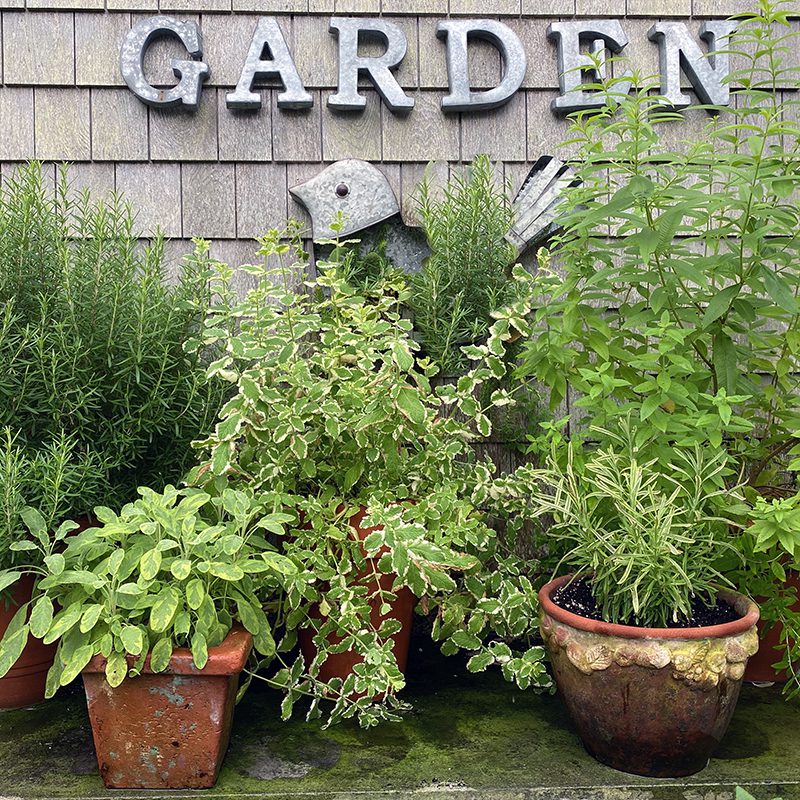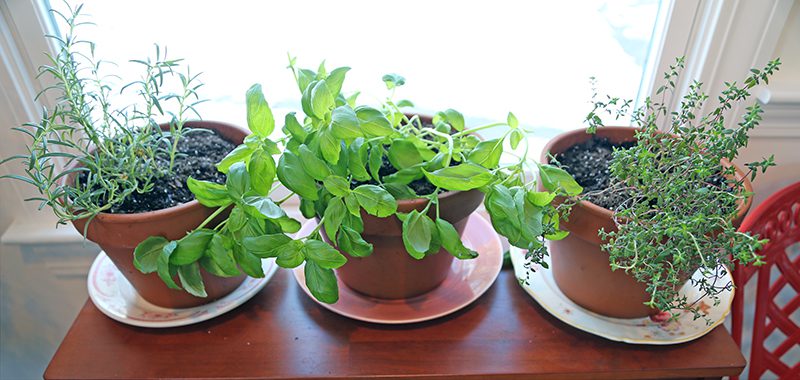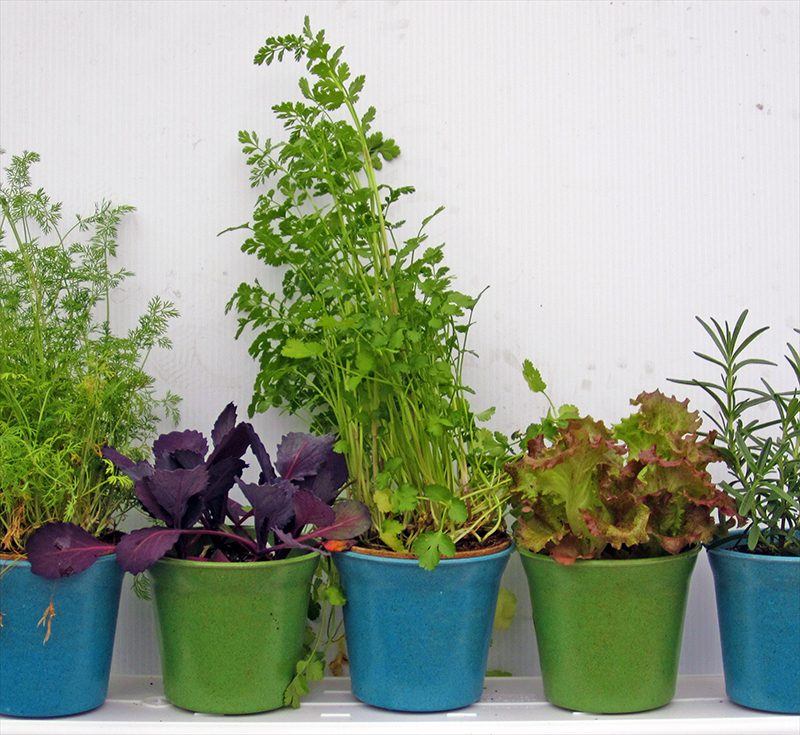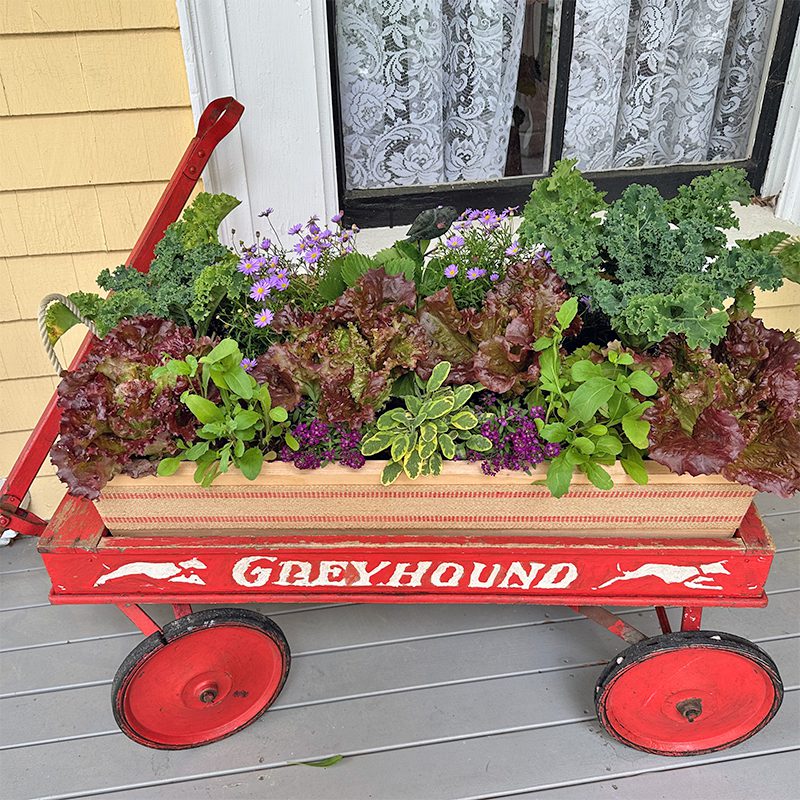Moving Herbs Inside For The Winter
Moving Herbs Inside For The Winter
Many of your potted herbs might be looking really good in late October, leaving people to wonder, “Can I bring these inside for the winter?” The answer is yes, but… Here’s what you need to know when you want to bring herbs inside at this time of year.
Are your herbs already in pots?
Plants that have been grown in pots all summer will transition into the house better than those that are growing in the ground. Herbs that are in a garden and have to be dug will suffer from transplant shock and from having their roots cut. Add the shock of coming inside where there is less light, and those plants are less likely to do well. If your herbs are in the ground, better to harvest and either dry or freeze them for use in the future than to try and move the living plant inside.

Do you have a sunny window?
Herbs do best indoors when they are getting some direct sun. A south-facing window where no trees block the sun is best, followed by a western or eastern exposure.

How warm is your house?
Some herbs grow best in cooler temperatures. Chervil, coriander, parsley and dill do better in a cooler room, while basil, lavender and rosemary are fine in warmer spaces.

Use them or lose them!
Most herbs benefit from being harvested regularly. This is especially true if basil, coriander, dill and parsley, so don’t hesitate to cut them for cooking. The main herb that you might count on lasting through the winter and moving outdoors again next year is rosemary. Keep your rosemary watered on a weekly basis – remember that it is less likely to show that it’s dry, and as herb people will tell you, “A dry rosemary indoors is a dead rosemary.” Snip any long, weak growth off during the winter and use it for cooking.
Possible indoor herb problems.
Rosemary and lavender are prone to powdery mildew indoors, especially later in the winter. Because of the color of the leaves, this is most noticeable on the newer growth. If you see mildew, you can spray with Neem Max. Watch for signs of whitefly on basil and parsley, and water with spinosad (Captain Jack’s Deadbug Brew) in the watering can if you see fungus gnats.
Be willing to send them back outdoors.
If an herb has a disease or insect problem, or if they have declined beyond the place where they can be used for cooking, don’t hesitate to put the pots in a cold garage or back outdoors. Use the line my father would say on Saturdays: “What are you doing, hanging around inside. You kids should be outside playing!”

Subscribe To Our Newsletter
Sign up for our weekly email about sales and events.
